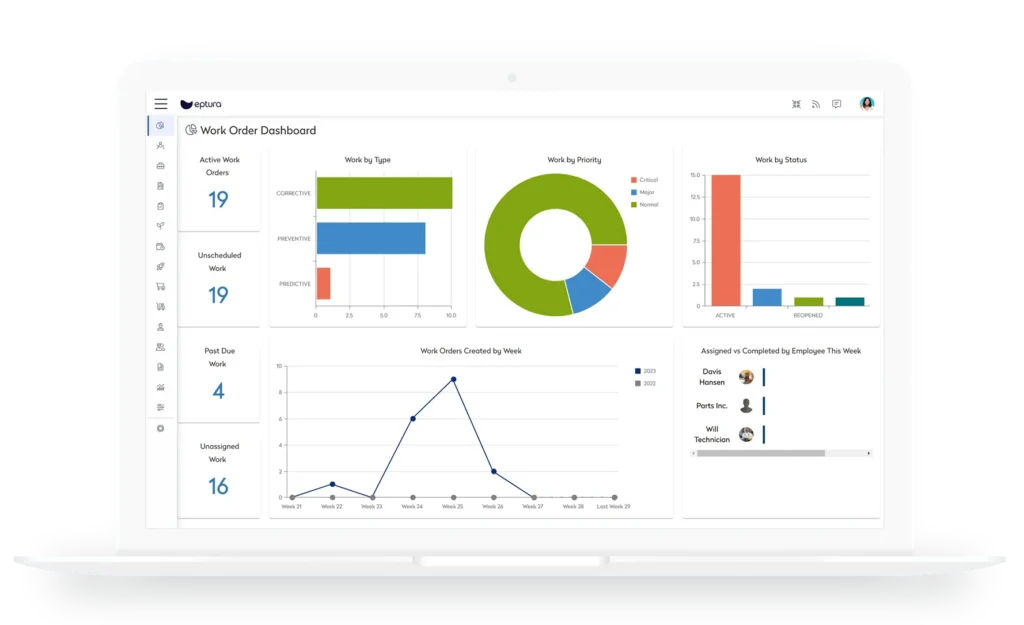
Picture this: a facility manager navigating a landscape of countless spreadsheets, specialized software, and manual workflows to keep operations running smoothly. It’s a daily challenge, and as businesses scale, complexity often grows. The workplace becomes a web of disparate systems that, while effective in isolation, can become cumbersome when pieced together.
With technology reshaping industries at an unprecedented pace, simplicity isn’t just an advantage — it’s essential for efficiency and growth. Facility managers are at the center of this evolution, and a unified asset management and workplace platform can transform their operations. Beyond making daily tasks easier, an integrated platform is now a strategic asset that aligns with broader business goals, from improving employee satisfaction to reducing operational costs. Here’s why adopting a unified platform isn’t just a trend but a vital component of modern facility management.
Simplifying operations and reducing manual workloads
Facility management spans everything from maintenance scheduling to space utilization and asset tracking. Managing these tasks across multiple disconnected systems is time-consuming and prone to errors. An uncoordinated maintenance system might lead to duplicated work orders or overlooked tasks, which can delay operations and inflate costs.
A unified platform consolidates these disparate systems, offering a single dashboard to manage all essential functions. By streamlining information, facility managers can quickly access critical data, automate recurring tasks, and reduce the likelihood of errors. Instead of toggling between tools, they can monitor and manage everything from a single interface, cutting down on administrative time and manual entry.
Enabling quicker data-driven decision-making
Modern facility managers must constantly make decisions that impact budgets, resource allocation, and space optimization. Yet, with data scattered across various platforms, gathering insights can be a challenge. Unified platforms address this by centralizing data, allowing facility managers to analyze trends and make informed choices more easily.
Consider energy consumption data, for instance. A unified platform might reveal that certain areas of a building are underutilized during peak hours, enabling managers to adjust heating, cooling, or lighting. This visibility can significantly reduce energy costs while supporting sustainability goals — a priority for many organizations today. According to research by Deloitte, 85% of business leaders cite sustainability as a top priority, recognizing its impact on both operational efficiency and brand value. Unified platforms make these insights accessible, empowering facility managers to make decisions that are both financially and environmentally sound.
Supporting flexibility in a hybrid workplace
The shift to hybrid work models has placed new demands on facility managers. Employees now come and go on varied schedules, creating the need for agile space planning and adaptable asset management. Traditional systems, designed for static schedules, struggle to accommodate this fluid environment. This is where a unified workplace platform shines.
With real-time occupancy data, facility managers can monitor which spaces are being used and adjust layouts or resources accordingly. If a team of 20 employees reserves an area for collaboration, the platform can notify cleaning teams for pre- and post-use sanitization or adjust HVAC settings to maintain comfort. This adaptability improves employee experience by ensuring that resources align with actual usage, avoiding under- or overutilized spaces.
Furthermore, a centralized system can handle booking, tracking, and managing these spaces, making it easier for employees to reserve desks, meeting rooms, or collaborative areas as they need. This functionality supports the organization’s flexibility and helps facility managers maintain operational efficiency, even with shifting work patterns.
Prolonging asset life with smarter preventive maintenance
For facility managers, equipment maintenance is a critical responsibility. Unexpected breakdowns can disrupt business operations, resulting in costly downtime and repairs. Often, traditional reactive maintenance approaches only address problems after they arise, causing inefficiencies and extra costs.

With a unified asset management system, facility managers can switch to preventive or predictive maintenance strategies. By integrating with IoT sensors and tracking equipment usage patterns, a unified platform can identify early warning signs of wear and tear, enabling maintenance teams to address issues before they escalate. According to a study by McKinsey, predictive maintenance can lower maintenance costs by 10-40% and reduce downtime by up to 50%. For facility managers, this translates into cost savings, extended asset lifespans, and improved overall reliability of building operations.
Strengthening communication and collaboration
Facility management often involves coordinating between multiple teams — maintenance, janitorial, IT, and administrative staff — all of whom have their own workflows and priorities. Without a unified platform, communication can become a tangled web of emails, calls, and in-person requests, which slows down response times and introduces miscommunication risks.
A unified platform can centralize communication, providing a shared space where teams can coordinate, share updates, and respond to issues in real-time. For instance, if an HVAC issue arises, maintenance teams can see it immediately, update status on the platform, and even share photos or notes. Other teams can view this status in real-time, reducing the need for follow-up emails or status checks.
This centralization fosters greater transparency and accountability. Employees can see when issues are logged and resolved, while managers gain visibility into team performance and response times. It’s a collaborative tool that brings efficiency and cohesion to facility operations, ensuring that everyone stays aligned.
Amplifying workplace safety and compliance
Safety and regulatory compliance are paramount in facility management. A unified platform can help facility managers stay on top of inspections, certifications, and safety protocols by offering a centralized location for all compliance-related data. This includes tracking incident reports, documenting safety inspections, and setting up automated alerts for compliance deadlines.
Facility managers can also use the platform to provide employees with easy access to safety information, such as emergency procedures or contact information for on-site assistance. This accessibility not only streamlines compliance but also fosters a safer, more secure workplace. Given that workplace safety violations can result in fines or, more critically, risk to employees, having a comprehensive platform for compliance management is invaluable.
Leveraging technology to drive strategic goals
For today’s facility managers, technology is no longer a back-office function but a strategic asset. A unified platform provides access to a wealth of data that can inform decisions aligned with business goals. As large enterprises increasingly prioritize sustainability, employee experience, and operational efficiency, facility managers can use insights from their platform to contribute directly to these objectives.
For example, reducing energy usage aligns with both cost reduction and sustainability targets, while enhancing the employee experience by offering flexible, well-maintained spaces can aid in talent retention. With a platform that centralizes and connects these aspects, facility managers can position themselves as integral partners in achieving broader organizational objectives.
Get behind one, unified platform for an optimal workplace
Simplicity is more than a convenience for facility managers; it’s a necessity. A unified asset management and workplace platform provides a streamlined approach to managing daily operations, from maintenance to space utilization, communication, and compliance. By consolidating tools, facility managers can reduce inefficiencies, respond faster to challenges, and make data-driven decisions that support their organization’s goals.
For facility managers, adopting a unified platform isn’t just about simplifying workflows; it’s about taking a proactive role in shaping a modern, responsive workplace.








